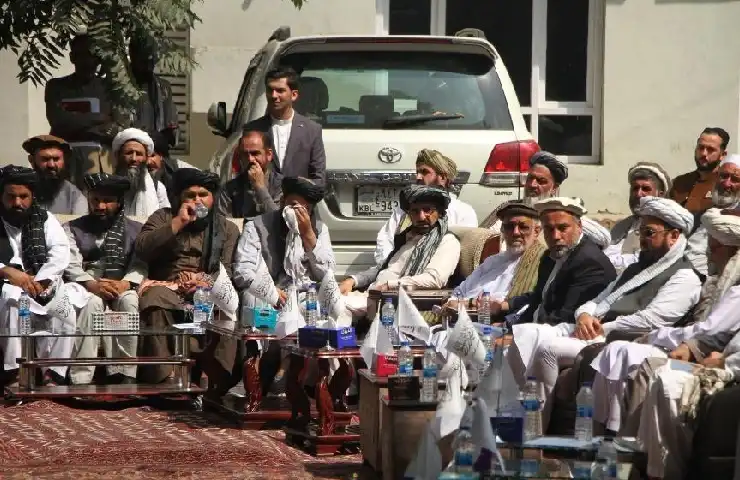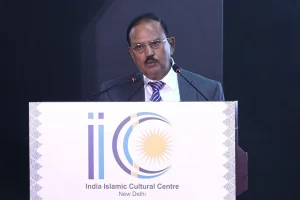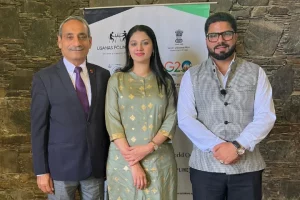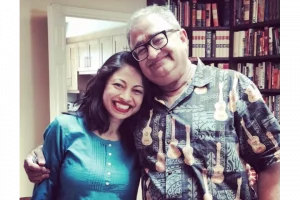The last six weeks have witnessed some dramatic developments in the fortunes of groups and movements that espouse Islam in the political order. On 15 August, the Taliban entered Kabul without facing any opposition and announced their full control over the country. A few weeks later, they announced an interim council of ministers that reflected Pakistani influence, while the distribution of senior positions conveyed the strong suggestion that the “new” Taliban could continue in the footsteps of their earlier incarnation of the late 1990s that had gained them global notoriety.
In two other West Asian countries, Islamic parties have experienced serious setbacks. In Tunisia, on 25 July, the democratically elected president, Kais Saied, suddenly suspended the constitution and parliament, removed the government from office, and assumed full powers for himself. These actions subverted the democratic order, in place since 2011, and removed from power and influence Ennahda, Tunisia’s Islamic party that had obtained the most votes in elections in 2019, and whose leader, Rachid Ghannouchi had been the speaker of the suspended assembly.

Moroccan King Mohammed VI (Photo: IANS)
The most recent dramatic development has been in Morocco. The ruling Islamic party, the Justice and Development Party (PJD), in parliamentary elections in mid-September lost 113 out of 125 seats that it had won in the last election in 2016. Again, at eighth position, it was at the bottom of the parties that had won seats in the assembly.
Commentators have promptly placed these defeats in the framework of the ouster of the democratically elected Muslim Brotherhood government of President Mohammed Morsi in Egypt that had been removed as a result of a military coup in July 2013. Many of them have argued that these developments have rung the death knell of Islamic parties and possibly mark the end of political Islam in West Asian politics.
Political Islam
Political Islam or Islamism is the effort made by a movement to reshape a state order on the basis of principles drawn from Islam, specifically the Koran and the Hadith (the ‘Traditions’ of the holy Prophet), the two primary sources of Islamic doctrine and practice. The adherents of such movements seek to discover these principles from early Islam – the period of Prophet Mohammed in Medina and the testimony relating to his sayings and conduct from the first three generations of his companions.
In Arabic, these early associates of the prophet are referred to as Salaf al-Saleh, the pious ancestors. Hence, the attempt to obtain principles of Islam from these sources is also called ‘Salafism’ in English.
Today, political Islam has three broad expressions: one, Wahabbiya, the doctrinal basis of the Saudi kingdom. In this order, the ruler enjoys monopoly control over all decisions relating to national matters; he is responsible for the security and welfare of his people, while they owe him loyalty and obedience.
The second expression is that of the Muslim Brotherhood. This movement was set up in 1928 in a small town in Egypt by a teacher, Hassan al-Banna, to preserve the country’s religious and cultural heritage against the influences of secularism and materialism from the West. In recent years, its intellectuals have sought to marry the principles of Islam with those of parliamentary democracy. It has autonomous movements in several West Asian countries.
The third expression is referred to as Salafi-Jihadism. The Afghan jihad of the 1980s had the unintended consequence of spawning a powerful transnational entity, Al Qaeda. Its early ideologues drew their rigid and intolerant doctrines from Wahabbiya, but shaped their movement as overtly hostile to existing state authorities across West Asia and the ‘far enemy’, the US.
With the increasing use of the term ‘Islamism’ to describe political Islam, the movements and parties espousing it are referred to as “Islamist”.
The “politics” of Islamism
Since the 9/11 attacks, the three expressions of Islamism have been in constant competition with each other. Saudi Arabia and many other members of the Gulf Cooperation Council (GCC), except Qatar, see a challenge to their monarchical order from the Muslim Brotherhood that espouses active popular participation in national decision-making. Jihadism is, of course, anathema to the other two expressions of political Islam.
These rivalries acquired a sharper edge after the Arab Spring uprisings from 2011. Saudi Arabia and some of its GCC partners watched with concern the ascendancy of the Brotherhood in Egypt, culminating in the election of Mohammed Morsi as president in 2012. Qatar and Turkey, who back Islamism, moved swiftly to strengthen ties with their ideological affiliate.

Supporters of ousted Egyptian president Mohamed Morsi protest against the Egyptian military in Turkey in 2014 (Photo: IANS)
In Tunisia, the Islamist party, Ennahda, that had been outlawed by former president, Zine el-Abidine bin Ali, and its leader, Rachid Ghannouchi had lived in exile in the UK since 1988, won the most votes in the 2011 elections and formed the government.
Saudi Arabia and the UAE believed that if the Brotherhood remained in government in Egypt for a few years, it could become a model of a successful Islamist-democratic order which would undermine the standing and credibility of the monarchies. They worked quickly to undermine the Morsi government, by backing Egypt’s ‘deep state’, led by the armed forces, to overthrow Morsi.
The coup was executed by the Morsi-appointed defence minister, General Abdel Fattah al-Sisi. Most of the Brotherhood leaders were imprisoned, while the others fled into exile, mainly to Qatar, Turkey and London. Within a month of the coup, Egyptian security forces killed several hundred Brotherhood supporters demonstrating in front of the Al-Rabaa al-Adawiya mosque in Cairo. In September 2013, all Brotherhood activities were banned, while in February 2014, the Brotherhood was declared a terrorist organisation.
Seeing the developments in Egypt, Ennahda moved quickly to step down from governance and support a government of technocrats and then, in 2014, join an elected government as a junior partner. It also backed the finalisation of a democratic constitution that makes no reference to Sharia as the source of law and provides for equal rights for all citizens, regardless of gender and denomination. In 2016, Ghannouchi declared that Ennahda would no longer be an Islamist party but would be a “Muslim Democratic” Party, on the lines of Christian Democratic parties in Europe. Ennahda would now only be a political party and would give up da’awa, preaching, its principal mission as an Islamist party.
Support or opposition to political Islam has shaped the new battle-lines in West Asia – Saudi Arabia and the UAE, backed by Bahrain and Egypt, against Turkey and Qatar. On this basis, the former initiated the blockade of Qatar in June 2017, cutting all diplomatic, economic and logistical links with Qatar. The principal demand from the kingdom and the UAE was that Qatar cut off its support for the Brotherhood and delink itself from Iran.
But this “siege” was soon foiled with Turkey and Iran rushing to Qatar’s assistance by opening air and sea supply lines. Turkey also placed about 5000 soldiers in Qatar to ensure the regime was not threatened with an externally-sponsored coup. The siege was lifted at a GCC summit in Al-Ula in Saudi Arabia in January 2021, with no concessions having been made by Qatar.
Turmoil in Islamist politics
As noted above, the Taliban’s return to power in Kabul is taking place at a time of considerable ferment in relation to political Islam. In Tunisia, the political “coup” executed by President Kais Saied has been widely welcomed in Saudi Arabia, the UAE and Egypt as a victory against an oppressive Islamic government.
The narrative emerging from these three countries is that the president’s moves mark the victory of the popular will over Islamism. A Saudi newspaper, Okaz, headlined: “Tunisia revolts against the Brotherhood”, while a UAE paper called the president’s actions “a brave decision to save Tunisia”. Egypt’s Al-Ahram celebrated the “loss of the last Brotherhood stronghold in the region”. In fact, triumphalism in these capitals has even led some observers to speculate if the governments concerned had a hand in engineering the political change, as they had done in Egypt in 2013.
The situation in Morocco is a little more complex. While Tunisia had a functioning democratic order, in Morocco, despite regular parliamentary elections, political decision-making has been tightly controlled by the king, Mohammed VI. The king had accommodated the Islamist party, Justice and Development party (PJD), in power since 2011 to stem the tide of popular uprisings taking place across the region. But the country never graduated to a full-fledged democratic order; the PJD agreed to function with limited power and influence and always accommodated the diktat from the palace.
The factors that caused the fall of the PJD relate to the fallout from the pandemic that hit country’s economy, particularly its tourism sector. But what really undermined the Islamist party was that the prime minister, Saad Eddine Othmani, succumbed to pressure from the palace and signed the agreement on “normalisation” of relations with Israel.
This action, as the editorial in the pan-Arab portal, Rai al-Youm, has said, amounted to a “betrayal of the party’s principles and profound political legacy”. Thus, the defeat of the PJD is not so much the rejection of political Islam as the rejection of the party that was believed to have betrayed the values and principles of Islamism.
There is another interesting development in the Islamist realm. Largely to curry favour with diverse constituencies in the US, both Saudi Arabia and the UAE are today projecting their commitment to modern and moderate Islam. This, of course, distinguishes the UAE from its arch regional rival, Qatar, while, for Saudi Arabia, the effort is linked to pandering to youth at home, while projecting an improved image in the US.
Wellsprings of the Taliban
The Taliban have taken power in Afghanistan in the back-drop of this turmoil in Islamist politics. Given their close association with violent extremism, particularly with Al Qaeda and the 9/11 attacks, there is now considerable speculation about the implications of Taliban resurgence for the fortunes of political Islam in general and, specifically, for transnational jihad.
The Taliban are the products of madrassas at the Pakistan-Afghanistan border that were run by organisations associated by the Jamiat-ul-Islam (JUI), a Pakistani political party. The JUI itself was set up in Pakistan by scholars who, at the time of partition had split from their original alma mater, the Dar-ul-Uloom, founded at Deoband, near Delhi, in 1867. This had been the brain-child of distinguished Muslim academics who wished to preserve Islamic learning in India at a time of considerable political and cultural pressure from British rule. The ideological foundation of their educational programme came not from the Wahabbi tradition of Saudi Arabia, but from India’s own heritage of Islamic reform in the 18th and early 19th centuries that accepted both Sharia and Sufic mysticism as part of its Islamic discourse.
The Deobandi scholars who migrated to Pakistan set up the JUI in Pakistan initially as a purely religious movement, but in 1962 made it a political party. It split into several factions, with the one in the North-West Frontier Province (NWFP) being particularly active in terms of shaping its Islamic agenda and in political mobilisation.
The JUI was excluded from any role in the jihad in Afghanistan in the 1980s. Under the leadership of Maulana Fazzlur Rehman, it used this period to expand its madrassas across Pakistan, but particularly in the border areas with Afghanistan. The most important of these madrassas were the Darul Uloom Haqqania at Akhora Khattak, headed by Maulana Samiul Haq, and the Jamiatul Uloom Islamiya in Binori, headed by Maulvi Mohammed Yusuf Binori.
As Afghanistan fell into civil conflict after the Soviet withdrawal in 1989, Prime Minister Benazir Bhutto and her Interior Minister, General Nasrullah Babar, directed the Inter-Services Intelligence (ISI) to mobilise the Afghan and Pakistani students into a militant force, the Taliban (‘Students’). In 1994, students from the Haqqania and Binori seminaries, led by veterans of the jihad and advised by Pakistani army officers, burst upon the Afghan landscape as a new fighting force.
By 1996, they had most of the country under their control. They set up the ‘Emirate of Afghanistan’ at Kandahar in 1996, under the leadership of Mullah Omar. In that same year, Mullah Omar, at ISI behest, also provided sanctuary to Osama bin Laden, thus bringing together the Taliban and Al Qaeda in a formidable alliance.
But it is important to note that the Taliban and Al Qaeda do not come from the same Islamist moorings. While Al Qaeda belongs to the Wahabbi tradition, referred to as Salafi-Jihadism, the Taliban remain anchored in the Hanafi tradition and, in tune with their Deobandi origins, also accommodate Sufism.
Thus, the Taliban banned the activities of Salafis from the Wahabbi tradition in their emirate, forbidding them to preach or build mosques, and even forcing some Salafis to publicly recant their beliefs. In doctrinal terms, the Taliban are perhaps best viewed as “Islamic traditionalists” or, as Olivier Roy has described them, “neo-fundamentalists”: their Islamism does not have a clear ideology, nor does it have a global political agenda; they simply call for the application of the Sharia in matters relating to ritual, dress and conduct.
In terms of their world-view, the Taliban, unlike Al Qaeda and the Islamic State, that had emerged across Iraq and Syria in July 2014 as a new transnational jihadi movement, do not seek the reshaping of world order; they confine their activities to Afghanistan and are motivated by just one conviction – to liberate their country from foreign occupation. Thus, the Taliban need to be viewed as belonging to doctrinal and political bases that are very different from other transnational jihadi movements.
In political terms, the Taliban can best be understood as an “Islamic national liberation movement”, in line with similar ideology-driven freedom movements in Asia, Africa and Latin America that fought for independence against colonial rule in the last century. Thus, they had no difficulty in negotiating with the US its withdrawal from Afghanistan, something that would just not be acceptable to Al Qaeda or the Islamic State. Hence, not surprisingly, there is visceral hostility between the Taliban and the Islamic State Khorasan (ISK), the extremist grouping in the provinces of Kunnar, Nangarhar and Jawzjan, that claims affiliation with the Islamic State, but is largely made up of Afghan and Pakistani militants.
(The author, a former ambassador to Saudi Arabia, Oman and the UAE, holds the Ram Sathe Chair for International Studies, Symbiosis International University, Pune. This is the first part of his article. Views expressed are personal)




















